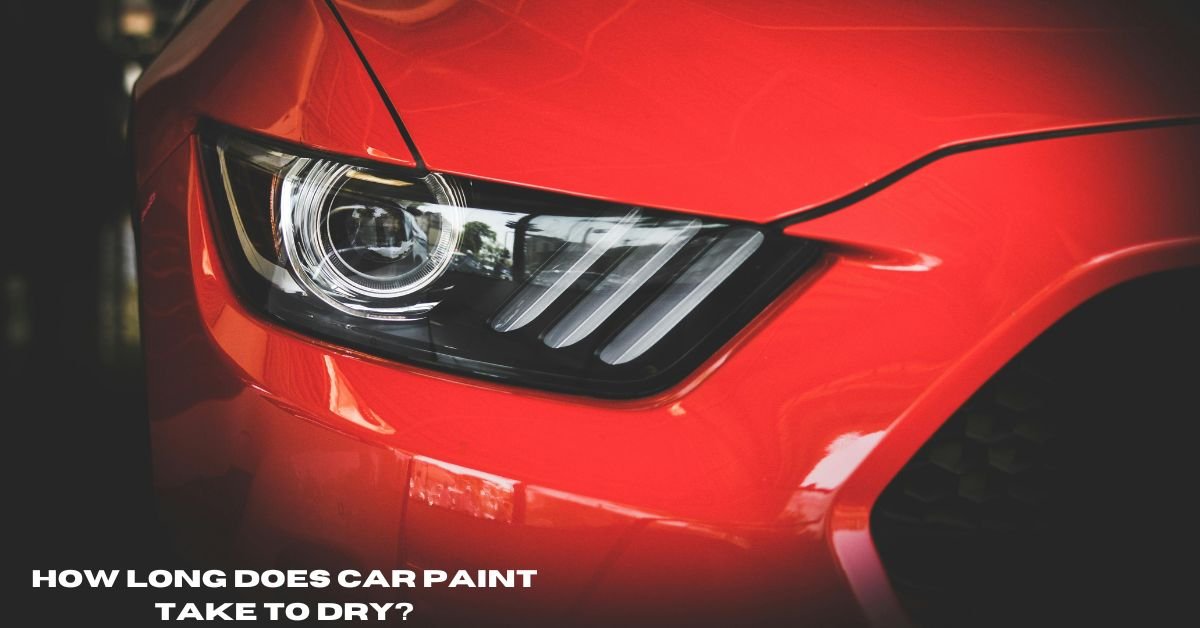How Long Does Car Paint Take to Dry?
When it comes to car painting, whether you’re restoring an old classic, refreshing a scratched-up vehicle, or giving your car a new look, one of the most common questions that arise is: how long does car paint take to dry?
The answer to this question isn’t as straightforward as you might think, as it depends on various factors including the type of paint used, the environmental conditions, and whether you’re applying a single layer or multiple layers. In this blog post, we will break down all the key factors that affect car paint drying times, so you can plan your painting project more effectively.
1. Types of Car Paint
Before we dive into the specifics of drying times, it’s important to note that there are different types of car paint available, and each has its own drying time.
- Acrylic Enamel – This is a common type of paint used for cars and has been around for many years. Acrylic enamel is durable and offers a glossy finish. However, it can take a bit longer to dry, often requiring up to 24-48 hours to dry completely.
- Acrylic Urethane – A more advanced version of acrylic enamel, acrylic urethane dries faster and is more resistant to UV rays and harsh weather conditions. It usually takes about 12-24 hours to dry to the touch but can take up to 48 hours for full curing.
- Polyurethane – This paint type is often used in professional auto body shops due to its strong, durable finish. Polyurethane-based paints take longer to dry, and the drying time can be anywhere from 12-36 hours depending on the thickness of the paint layers and environmental conditions.
- Water-Based Paint – This eco-friendly paint is becoming more popular, as it has less impact on the environment and is often easier to clean up. Water-based paints tend to dry faster than oil-based paints, usually within 1-2 hours for the surface to feel dry. However, full curing might take a bit longer — around 24-48 hours.
2. Factors Affecting Drying Time
Several factors will affect how long it takes for your car paint to dry. Let’s examine a few of the most significant.
1. Temperature
Temperature plays a huge role in how quickly your paint will dry. In general, car paint dries faster in warmer temperatures. Ideal painting temperatures range between 60-85°F (15-30°C). In these conditions, the paint will cure at a faster rate. On the other hand, if you’re painting in cold weather, it will take longer for the paint to dry, and it may even cause the paint to wrinkle or crack if it doesn’t dry properly.
2. Humidity
Humidity is another important factor when it comes to drying times. High humidity can slow down the drying process because moisture in the air prevents the solvents in the paint from evaporating quickly. If you’re painting in a very humid environment, the paint may take significantly longer to dry and could even become prone to runs and streaks. A dry, low-humidity environment is always preferable for painting.
Must Read: How Do You Get Bugs Off Car?

3. Paint Thickness
The thickness of the paint layers you apply is another critical factor. Naturally, it will take longer for thicker paint layers to dry. This is why it’s common to apply multiple thin layers of paint to achieve an even finish. It’s important to allow each layer to dry before applying the next to avoid issues with bubbling or cracking.
4. Air Circulation
Good ventilation and air circulation are essential to the drying process. Paint dries faster when it is exposed to fresh air because the solvents evaporate more quickly. If you’re working in a closed garage, you might want to set up fans or open windows to promote airflow. However, avoid using fans that blow directly onto the paint, as this can cause dust and debris to stick to the surface.
5. Type of Finish (Clear Coat)
If you’re applying a clear coat on top of the paint, the drying time can vary. Clear coats generally dry faster than colored base coats, but they still require time to cure fully. After applying a clear coat, you should wait at least 12-24 hours for it to dry properly before buffing or polishing. If you want the perfect glossy finish, additional curing time might be needed.
3. How Long Should You Wait Before Driving?
Even after the paint feels dry to the touch, it’s best to avoid driving your car immediately after painting. Full curing of car paint takes time, and if you drive the car too soon, you risk damaging the finish, such as by exposing it to road debris or high temperatures. Typically, you should wait 24-48 hours before driving your car, although this can vary based on the type of paint used.
In general, it is best to give your car 1-2 weeks to fully cure. During this period, avoid washing the car, exposing it to harsh weather, or driving it long distances to ensure the paint has adequate time to harden and bond.
Conclusion
In conclusion, the drying time for car paint can vary significantly based on the type of paint used, temperature, humidity, and the number of coats applied. On average, car paint can take anywhere from 1-48 hours to dry to the touch and up to 2 weeks to fully cure.
Remember, while it’s tempting to rush the process, patience is essential when painting your car. Giving your paint enough time to dry will ensure a smooth, durable, and long-lasting finish. So, take your time and allow the paint to cure fully before showing off your newly painted ride.